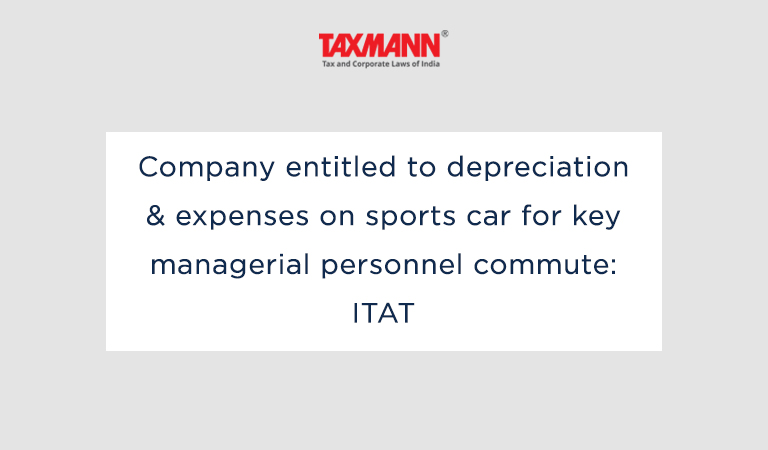Company entitled to depreciation & expenses on sports car for key managerial personnel commute: ITAT
- Blog|News|Income Tax|
- 2 Min Read
- By Taxmann
- |
- Last Updated on 28 February, 2023

Case Details: Silver Spark Apparel Ltd. v. DCIT - [2023] 147 taxmann.com 500 (Mumbai-Trib.)
Judiciary and Counsel Details
-
- Aby T Varkey, Judicial Member & Gagan Goyal, Accountant Member
- Madhur Agrawal, Adv. for the Appellant.
- Chetan M. Kacha, Sr. DR for the Respondent.
Facts of the Case
Assessee, a private limited company, filed its return of income for the relevant assessment year. For the year, the assessee’s case was selected for scrutiny. During proceedings, the Assessing Officer (AO) noticed that assessee purchased a sports car and claimed deduction for depreciation and maintenance expenses for the same.
The AO contended that the sports car was used primarily for car racing activities. The requirement of such a car in the case of the assessee, being a unit engaged in manufacturing suits and trousers, cannot be considered wholly and exclusively necessary for the purpose of the business. He disallowed the deduction for depreciation and maintenance expenses.
Aggrieved by the order, the assessee preferred an appeal to CIT(A). CIT(A) upheld the additions and the matter then reached the Mumbai Tribunal.
ITAT Held
The Tribunal held that the assessee was a private limited company and was to be considered a separate person and distinct assessable entity as per section 2(31) of the Act. A company is an inanimate person and there cannot be anything personal about such an entity. By virtue of its very nature, the company cannot have any “personal use”.
It cannot be stated the vehicle is used personally by the company, even though the vehicle is used by the directors for personal purposes. In addition, once the expenditure was in terms, as provided in sections 309 and 198 of the Companies Act, there could not be any ‘non-business’ purpose.
Therefore, the action of AO in disallowing depreciation and maintenance charges on the sports car owned and used by the assessee for the purpose of business was not justified.
List of Cases Reviewed
-
- Sayaji Iron & Engg. Co. v. CIT [2002] 121 Taxman 43/253 ITR 749 (Guj.)(para 7) followed.
List of Cases Referred to
-
- NIBR Bullion (P.) Ltd. v. DCIT [IT Appeal Nos. 5522 to 5524 (Mum.) of 2011, dated 17-7-2018] (para 6)
- Sayaji Iron & Engg. Co. v. CIT [2002] 121 Taxman 43/253 ITR 749 (Guj.)(para 6)
- Dinesh Mills Ltd. v. CIT [2022] 122 Taxman 384/254 ITR 673 (Guj.) (para 6).
Disclaimer: The content/information published on the website is only for general information of the user and shall not be construed as legal advice. While the Taxmann has exercised reasonable efforts to ensure the veracity of information/content published, Taxmann shall be under no liability in any manner whatsoever for incorrect information, if any.

Taxmann Publications has a dedicated in-house Research & Editorial Team. This team consists of a team of Chartered Accountants, Company Secretaries, and Lawyers. This team works under the guidance and supervision of editor-in-chief Mr Rakesh Bhargava.
The Research and Editorial Team is responsible for developing reliable and accurate content for the readers. The team follows the six-sigma approach to achieve the benchmark of zero error in its publications and research platforms. The team ensures that the following publication guidelines are thoroughly followed while developing the content:
- The statutory material is obtained only from the authorized and reliable sources
- All the latest developments in the judicial and legislative fields are covered
- Prepare the analytical write-ups on current, controversial, and important issues to help the readers to understand the concept and its implications
- Every content published by Taxmann is complete, accurate and lucid
- All evidence-based statements are supported with proper reference to Section, Circular No., Notification No. or citations
- The golden rules of grammar, style and consistency are thoroughly followed
- Font and size that’s easy to read and remain consistent across all imprint and digital publications are applied



 CA | CS | CMA
CA | CS | CMA
